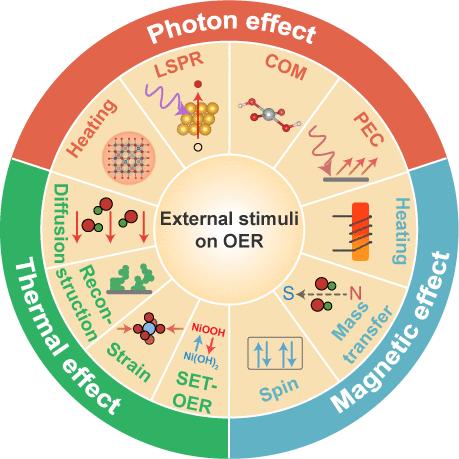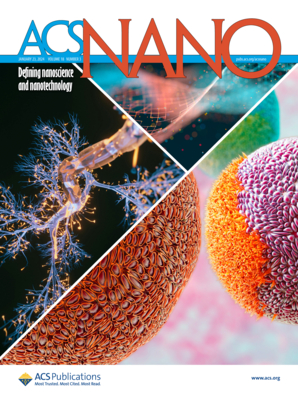Modulation of Electrochemical Reactions through External Stimuli: Applications in Oxygen Evolution Reaction and Beyond
IF 15.8
1区 材料科学
Q1 CHEMISTRY, MULTIDISCIPLINARY
引用次数: 0
Abstract
Electrochemical water splitting is a promising method for generating green hydrogen gas, offering a sustainable approach to addressing global energy challenges. However, the sluggish kinetics of the anodic oxygen evolution reaction (OER) poses a great obstacle to its practical application. Recently, increasing attention has been focused on introducing various external stimuli to modify the OER process. Despite significant enhancement in catalytic performance, an in-depth understanding of the origin of superior OER activity contributed by the external stimuli remains elusive, which significantly hinders the further development of highly efficient and durable water electrolyzed devices. Herein, this review systematically summarizes the recent advancements in the understanding of various external stimuli, including photon irradiation, applied magnetic field, and thermal heating, etc., to boost OER activities. In particular, the underlying mechanisms of external stimuli to promote species transfer, modify the electronic structure of electrocatalysts, and accelerate structural reconstruction are highlighted. Additionally, applications of external stimuli in other electrocatalytic reactions are also presented. Finally, several remaining challenges and future opportunities are discussed, providing insights that could further the study of external stimuli in electrocatalytic reactions and support the rational design of highly efficient energy storage and conversion devices.

求助全文
约1分钟内获得全文
求助全文
来源期刊

ACS Nano
工程技术-材料科学:综合
CiteScore
26.00
自引率
4.10%
发文量
1627
审稿时长
1.7 months
期刊介绍:
ACS Nano, published monthly, serves as an international forum for comprehensive articles on nanoscience and nanotechnology research at the intersections of chemistry, biology, materials science, physics, and engineering. The journal fosters communication among scientists in these communities, facilitating collaboration, new research opportunities, and advancements through discoveries. ACS Nano covers synthesis, assembly, characterization, theory, and simulation of nanostructures, nanobiotechnology, nanofabrication, methods and tools for nanoscience and nanotechnology, and self- and directed-assembly. Alongside original research articles, it offers thorough reviews, perspectives on cutting-edge research, and discussions envisioning the future of nanoscience and nanotechnology.
 求助内容:
求助内容: 应助结果提醒方式:
应助结果提醒方式:


